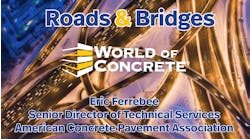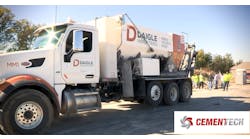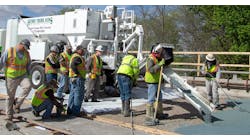By: Cathy Tuttle
Michael Wolf sits on his front porch on the new 58th Avenue NW Greenway and watches the world go by.
It has been just about a year since the neighborhood greenway in front of his house in the Ballard neighborhood of Seattle officially opened.
“I see moms on family bikes with a few kids behind them,” he said. “Lots of people out walking their dogs; an old lady with a walker comes by every evening and stops to push the little toy monkey swing I put up in my tree.”
Wolf is active in his community Ballard Greenways group, one of more than 20 local grassroots groups that have sprung up in the past three years under the umbrella of Seattle Neighborhood Greenways. These local groups share a common vision of completing a linked network in the next 10 years of 250 miles of safe streets spread throughout Seattle and prioritized for people walking and biking. The Seattle Neighborhood Greenways organization is a tiny nonprofit with two paid staff and hundreds of local volunteers, many of whom are young urban professionals who are sold on the idea of making their residential streets peaceful and attractive, protected from cars barreling through at dangerous speeds.
Ready to lead
Seattle Neighborhood Greenways has a friend in Seattle Department of Transportation (SDOT) City Traffic Engineer Dongho Chang. Chang sees engineers as being part of the “helping profession.” Engineers serve the community, he said, whether that is making a bridge structurally safe, a water system clean and efficient or a street network that serves all users.
“In my mind,” asserted Chang, “Seattle is going to be the leader in great streets for walking and biking. We’re already pulling ahead and we’ve got huge increases in density and jobs. And we’ve got a whole community supporting a sustainable transportation network.”
The idea of urban neighborhood greenways fits neatly into the framework of a sustainable transportation network. Greenways are exciting because they adapt residential communities to be healthier, more livable places that offer comfortable mobility to everyone across all life stages.
Greenways in Seattle were inspired by people returning from nearby Portland, Ore., and Vancouver, B.C., where robust networks of residential street greenways were already in place. Starting in 2011, Seattle Neighborhood Greenways took dozens of local engineers, planners, activists and policy makers to Vancouver and Portland on summer study trips to match up professionals with similar backgrounds who could then share learning and inspire ideas while riding miles together on neighborhood greenways by bike.
Seattle City Councilmember Sally Bagshaw has been a stalwart supporter of greenways since her 2011 trip to ride a bicycle on Portland greenways. In fact, Bagshaw’s office door features a large laminated Seattle Neighborhood Greenways sign on it. “I’m sold on the idea of greenways,” Bagshaw said. “I’ve seen how they bring people outside and get them active and how they bring communities together.”
Learning from others
In Portland, neighborhood greenways prioritize people riding bicycles along residential streets that are close to busy commercial corridors. Service vehicles, drivers and people parking their cars can still freely use the greenways, but stop signs and speed humps are aligned to favor people walking and biking over oncoming traffic.
Along Portland greenways, arterial crossings have been installed to enhance protection—traffic signals (often with bicycle buttons), median islands or rectangular rapid flashing beacons (RRFB) are used to allow people walking and biking along the greenway network to continue moving safely and efficiently. To prevent high volumes of fast cut-through traffic, Portland engineers have developed 20-mph speed humps that are placed as frequently as two per block. Portland Bureau of Transportation (PBOT) generously shared the specifications for these speed humps with Seattle engineers who are installing them along new greenways.
The big takeaway from tours of Vancouver greenways is how the city has developed the green-space potential of streets along their greenway system. Street parks, bioswales, green diverters, pocket parks and on-street parklets are abundant in Vancouver. These green-street ideas inspired Seattle visitors on study tours and are being adopted now at SDOT through the Public Space Management Program and by green storm-water teams from Seattle Public Utiltities.
The idea of streets as parks appealed to the leader of the Lake City Greenways, Janine Blaeloch. The Lake City neighborhood is quite deficient in park space and has a huge demand for open space from a dense immigrant population with many young children at home. Lake City Greenways teamed up with Jennifer Wieland, who manages SDOT’s Public Space Management Program, to build a street park in underused SDOT right-of-way. Blaeloch finds both community and purpose in her involvement in Lake City Greenways. She said, “Among the many things that make me happy to be part of Seattle Neighborhood Greenways, the people I get to work with and get to know a little are probably top of the list. This is time spent helping each other make the world a little better. Occasionally adding beer and good food doesn’t hurt at all.”
Places for people
The unique contribution of Seattle Neighborhood Greenways—and what distinguishes greenways that came top-down from Vancouver and Portland from the grassroots greenways ideas developed by communities in Seattle—is the idea of greenways as places for people. Many of Seattle’s grassroots greenways groups are blending ideas from many cities to develop ideas for street networks that serve local needs—shared streets, park space, trees and great places to walk and bike all have found a place along Seattle’s neighborhood greenways.
The result of a vast community of Seattle activists interested in positive changes to the street network has been strong political support and funding flowing into SDOT for safer, greener streets. This support is timely—Seattle is the fastest-growing urban center in America.
Scott Kubly, just tapped by Seattle Mayor Ed Murray to be the new SDOT director, said, “I am new to the city, but I spent the last couple of months getting to know the city. I noticed three things: First, Seattle is booming, there are cranes all over the city. The second thing that is readily apparent is that the transportation system needs to adapt to meet the challenges and opportunities that come with that growth, while also taking care of the basics. That means investing in a transportation system that will help us grow and attract and retain employees. Finally, we need to invest in new transit, in new bike and pedestrian facilities so we can make sure we can move all these new people around the city as well as the people who are currently living here.”
Local streets that have the focused attention of greenway development are beginning to show a ripple effect in property values. Residential streets with well-maintained sidewalks, green spaces and calmed traffic are a desirable oasis in a densifying city. Safe walking and biking routes going to thriving business districts, and an active, healthy, engaged community are secondary but equally valuable benefits of new neighborhood greenways in Seattle.
Informed citizens
With so many active community greenways groups, Seattle is reaching a tipping point in how people understand the function of their streets.
After several years of offering workshops, study trips, lectures and meetings, hundreds of Seattle Neighborhood Greenways members are familiar with basic street-safety issues. Indeed, many are now conversant with NACTO, AASHTO and the MUTCD.
This informed public now supports safe street improvements that otherwise might create public opposition. Road rechannelization, removing parking for improved sightlines, adding traffic-control devices and speed cameras are generally supported by people who support the development of neighborhood greenways.
Especially active people in Seattle Neighborhood Greenways take to the streets in crosswalk actions to highlight failure to yield and red-light noncompliance issues. Seattle Neighborhood Greenways also produces memorial walks and memorial bike rides following traffic fatalities to bring together local neighbors, police, city staff and elected officials and the families of people killed while walking and biking. These memorials amplify support for roadway safety improvements and help to support Seattle’s Target Zero goals.
Steps you can take
Seattle Neighborhood Greenways attracts people who advocate for positive change.
Bob Edmiston, leader of Madison Greenways and an inventor, is developing an affordable pedestrian-bike counter for SDOT to use.
Local volunteers—many who are experts in GIS, landscape architecture and software engineering—have created a crowd-sourced map of greenways that informed most of the greenway network in Seattle’s new Bicycle Master Plan and saved the city thousands of dollars in consultant fees.
Seattle Neighborhood Greenways groups all over Seattle have successfully petitioned for local and state funding for street improvements.
Deb Salls, Rainier Valley Greenway leader and Bike Works executive director, brought the National Park Service and the University of Washington together in a traffic-signal equity study to support safer signal timing for people who walk and ride bicycles in a low-income neighborhood in South Seattle.
Selena Carsiotis of Ballard/Crown Hill Greenways wrote grants for Safe Routes to School and City Neighborhood Funds to build Wildcat Way, a pathway to connect Whitman Middle School to the 17th Avenue NW greenway.
What Seattle has achieved can be replicated in other cities.
Can you replicate the success of Seattle Neighborhood Greenways in your city? Of course. It is simple. Here’s how:
1. Recognize that streets everywhere serve multiple users—people walking and biking, transit, cars, freight and service vehicles—and all have unique needs;
2. Avoid the bike-versus-car mentality by engaging with people who care about safe streets first and who realize streets can serve a public benefit for all; and
3. Celebrate successful collaborations and continue to work together.
The Seattle Neighborhood Greenways model requires the community to become a key partner with your city’s elected officials and staff by offering solutions to key problems. Seattle Neighborhood Greenways galvanizes community support and gets favorable press, which helps city leaders feel good about investing in livability improvements like greenways. In turn, city staff and elected officials become increasingly willing to trust and partner with the people they serve.
SDOT’s Chang said, “We need to push for what is best for our cities. As traffic engineers, can we build streets that support a sustainable, inclusive community where children can play? Can we build streets that support you, where you can age in your home with dignity?”
Chang and other city of Seattle employees have been the beneficiaries of a supportive, informed community group that provides political and financial support. Chang believes the strong Seattle Neighborhood Greenways community network allows him to serve community and the variety of ways people use to get around and live in the city.
Cities, even fast-growing tech cities such as Seattle, have limited budgets to maintain street infrastructure. Every city struggles with high expectations by multiple users of what a street network can provide to them. A partnership with proactive, knowledgeable community members may be exactly what is needed to manage the ever-growing demands on traffic engineers in their new role as “helping professionals.”
For more information about the Seattle Neighborhood Greenways organization, see http://seattlegreenways.org. R&B
About The Author: Tuttle is the executive director of Seattle Neighborhood Greenways.



